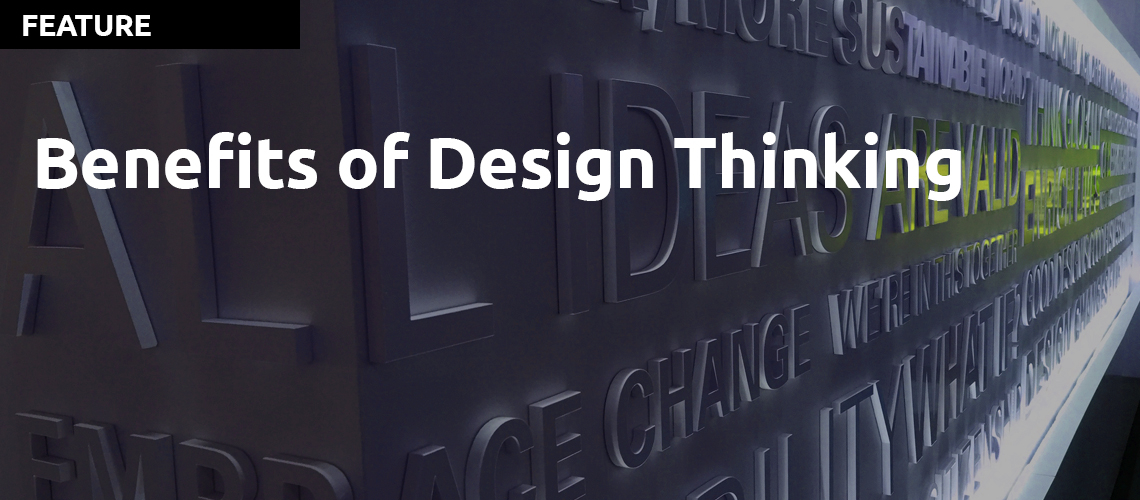
Design thinking is a powerful problem-solving approach that has been gaining popularity in recent years. This approach emphasizes empathy, experimentation, and iteration, and it has been used successfully by many organizations to create innovative new products and services. In this article, we will explore the benefits of design thinking and how it can help businesses and organizations create value for their customers and stakeholders.
- Empathy and understanding user needs
Design thinking starts with empathy, which is the ability to understand and share the feelings of others. In the context of design thinking, empathy means understanding the needs and wants of the user or customer. By focusing on the user, organizations can create solutions that are more likely to be successful in the marketplace. This approach is particularly important in today's customer-centric business environment, where customers have more options than ever before.
- Creativity and innovation
Design thinking is a creative approach to problem-solving that encourages people to think outside the box. By embracing new ideas and approaches, organizations can create innovative solutions that set them apart from the competition. Design thinking encourages experimentation and iteration, which means that ideas can be tested and refined until the best solution is found.
- Collaboration and teamwork
Design thinking is a collaborative approach that encourages teams to work together to create solutions. By bringing together people with different backgrounds and skillsets, organizations can create solutions that are more comprehensive and effective. Design thinking also encourages feedback and critique, which means that ideas can be refined and improved through the input of others.
- Agility and flexibility
Design thinking is an agile approach that allows organizations to adapt to changing circumstances quickly. By using a flexible and iterative approach, organizations can respond to feedback and new information as it arises. This means that solutions can be developed and refined in real-time, rather than waiting for a long development cycle to be completed.
- Customer satisfaction and loyalty
By focusing on the needs of the user or customer, organizations can create solutions that are more likely to satisfy their needs. This can lead to increased customer satisfaction and loyalty, which are critical for long-term success. When customers feel that their needs are being met, they are more likely to continue using the product or service, and to recommend it to others.
- Increased efficiency and productivity
Design thinking can also lead to increased efficiency and productivity. By focusing on the user and the problem at hand, organizations can avoid wasting time and resources on solutions that don't work. Design thinking encourages experimentation and iteration, which means that ideas can be tested quickly and refined until the best solution is found. This can lead to faster development cycles and better outcomes.
- Risk management
Design thinking is a low-risk approach to problem-solving. By testing and refining ideas quickly, organizations can identify potential risks and pitfalls before committing significant resources. This can help organizations avoid costly mistakes and make more informed decisions.
- Continuous improvement
The benefits of Design thinking is that it is a continuous improvement process that encourages organizations to learn from their mistakes and build on their successes. By embracing experimentation and iteration, organizations can identify areas for improvement and make incremental changes to create better outcomes. This means that solutions can be continuously refined and improved, rather than becoming stagnant or outdated.
- Social impact
Another benefit of Design thinking is that it can also be used to create solutions that have a positive social impact. By focusing on the needs of the user, organizations can identify problems and challenges that affect society as a whole. By using design thinking to create solutions, organizations can make a meaningful and lasting impact on society.
In conclusion, design thinking offers numerous benefits to organizations looking to create innovative and effective solutions to complex problems. By focusing on empathy and understanding the needs of the user or customer, design thinking enables organizations to create solutions that are more likely to succeed in the marketplace. The creative and collaborative nature of design thinking encourages experimentation and iteration, leading to more efficient and effective outcomes. The agile and flexible approach of design thinking also enables organizations to respond quickly to changing circumstances, while the low-risk approach helps to identify potential pitfalls and make more informed decisions. Ultimately, design thinking is a continuous improvement methodology that encourages organizations to learn from their mistakes and build on their successes, making it a powerful tool for driving innovation, efficiency, and social impact.
